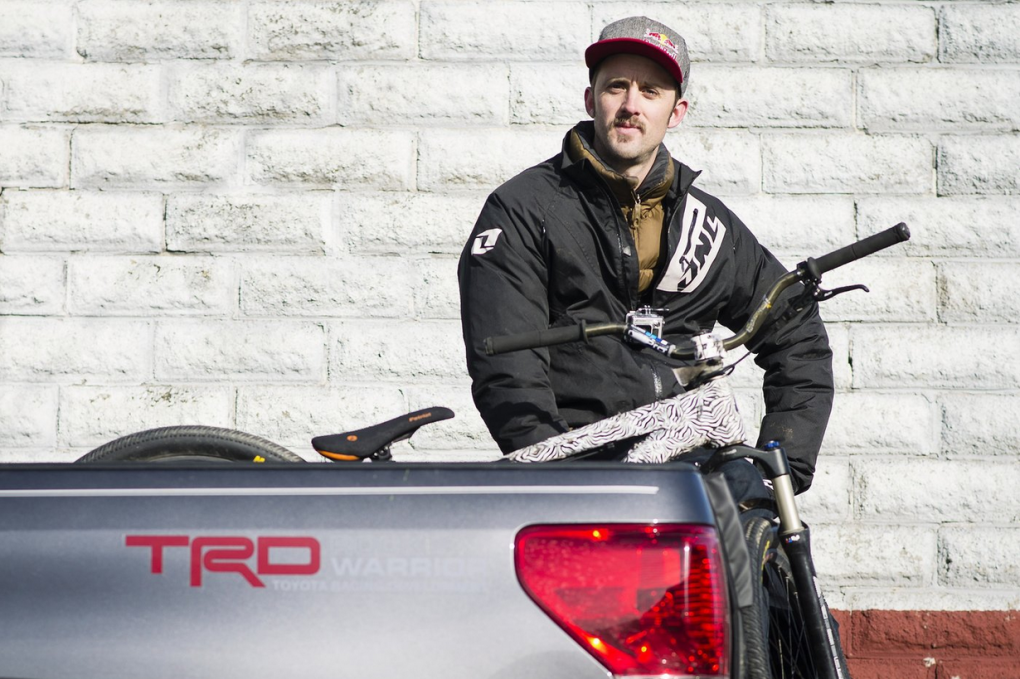
At the age of just 35, Aaron Chase is already a legend in the mountain bike world.
He started off riding bikes aged four, racing cross country at school before securing his first sponsor in downhill aged 18.
When freeriding really came into its own in 2000, Chase was there at the forefront. Like skating and snowboarding, mountain biking now had a platform for riders to shred, film parts and look damn cool without having to compete.
Chase chose to do both. If there was a competition, the chances are he’d be on the podium. Take the Red Bull Bike Battle and District Ride for starters.
The rest of his time was spent filming and making DVDs with the legendary Don Hampton among others.
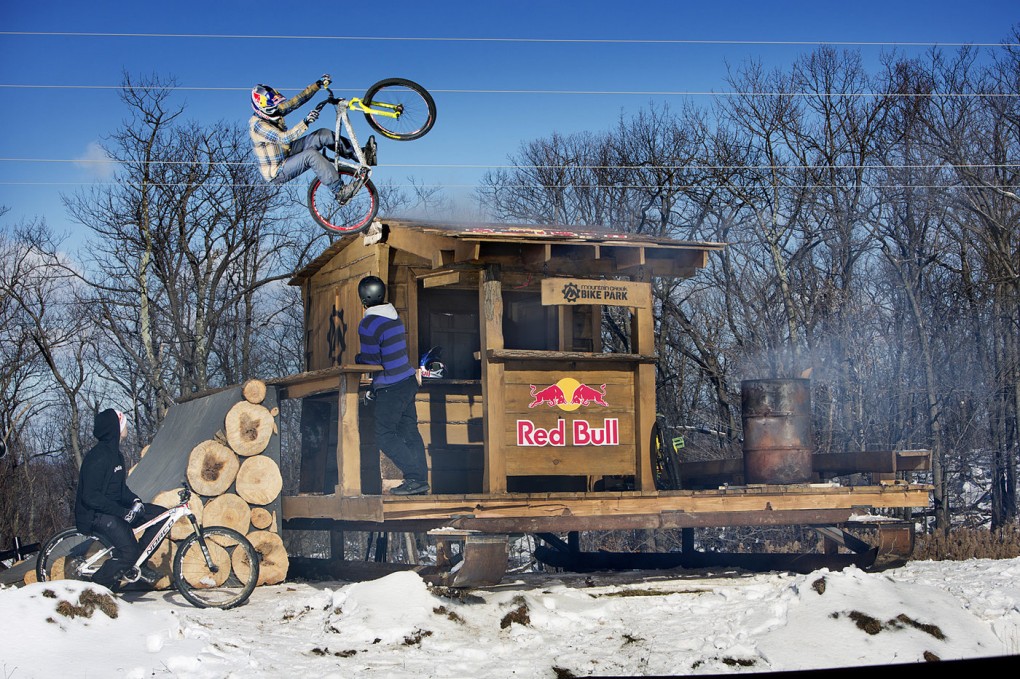
His part in revolutionary urban MTB movie Killing Time sparked Chase’ reputation as a street rider, bringing BMX-style tricks to mountain biking in a way no one had done before.
“I just loved being on my bike and trying to push things in a different direction,” said Chase when I spoke to him at the GoPro Mountain Games in Vail, Colorado. “Making segments is the best, because you’re able to be as creative and have as much fun as you want.”
As a result, Chase earned himself a reputation as one of the biggest freeride mountain bike pioneers in the world. In fact, there was a time when Chase seemed unstoppable. That was until a freak accident threatened to end his career for good.
The Accident
It all happened one day in May 2007. Chase was taking part in the Qashqai Challenge in Newcastle-upon-Tyne, UK when he his rear tyre slipped and he fell from a 3m high suspended ladder bridge, breaking the L1 vertebrae in his back.
“It didn’t hurt when I hit the ground. My spinal cord got crunched, like a can of soda. I was paralysed from the waist down.”
“It makes me emotional just thinking about how close I was to being paralysed”
It wasn’t until Chase was in the ambulance on the way to hospital that thankfully the sensation in his legs returned.
“When I got to the hospital, I was moving my feet around around. The nurse asked if my feet were uncomfortable. I said ‘No, I couldn’t move them and now I can.’ It makes me emotional just thinking about how close I was to being paralysed.”
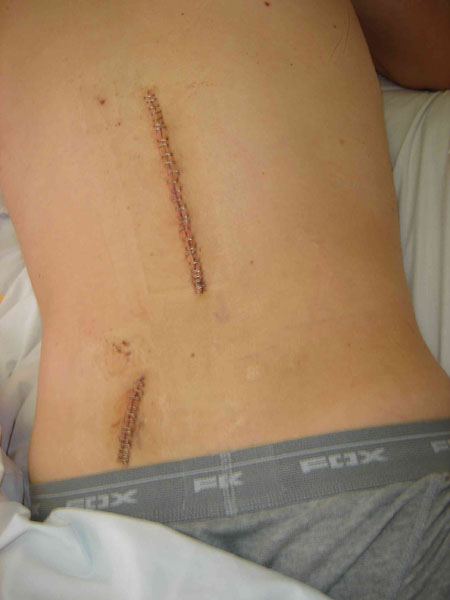
A year later, Chase was back on his bike, attempting the tricks he used to pull so before the accident. “The doctors said if I were a professional basketball player, I wouldn’t play basketball ever again.” But Chase wanted to get back to where he was before.
Is there anything he wouldn’t try now for fear of re-injuring himself? “Oh yeah, like a front flip on a mountain bike. I wouldn’t do that anymore because if you under-rotate, you land on your butt”.
Chase believes though that the biggest turning points in his career come after an injury. “I have a new-found energy for riding. I know I need to get back to where I was – and then become even better.”
From comps to circling the globe
It’s not hard to see why Chase turned his back on the competition scene to travel the world filming. In the past few years, he’s been jetting from Peru and Mexico to Australia and Japan, filming with the likes of Red Bull and GoPro.
While filming for New World Disorder, the sensational mountain bike film series, he came across his favourite destination so far – Turkey.
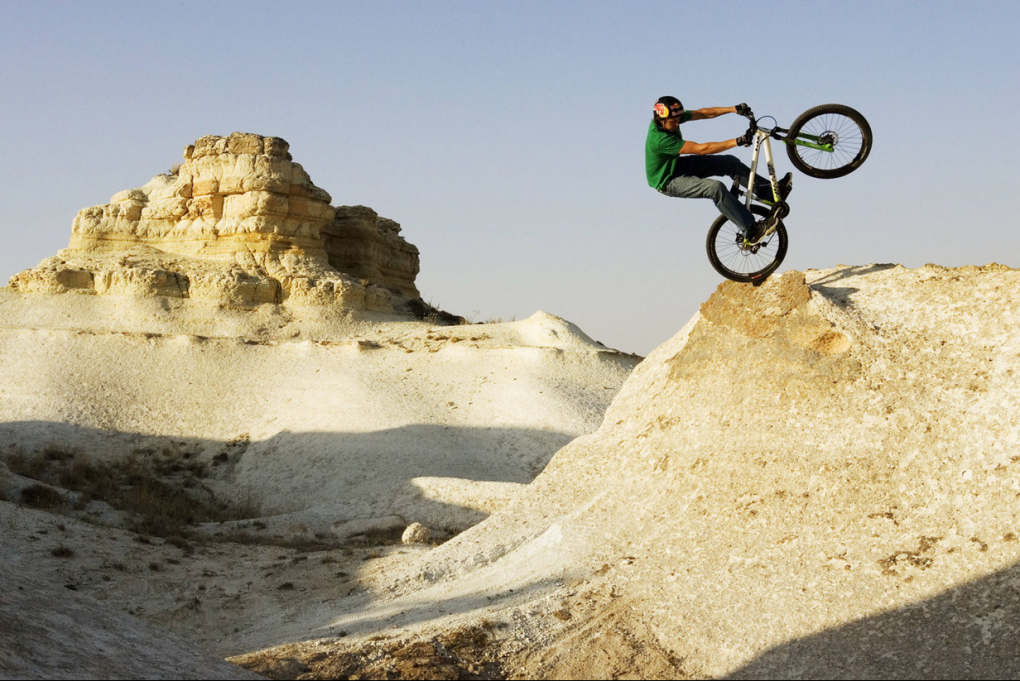
It seems like a strange choice to us Brits who see Turkey more as a package holiday destination than a gnarly freeride mecca. But then again, we’ve never explored the hundred foot rock spires of Cappadocia on two wheels.
“If a place like that existed in the States, you wouldn’t be able to ride there. You’d get thrown in jail. It’s the most intense, beautiful place I’ve ever seen.”
“I’m the producer, director, filmer, star, everything – and it doesn’t intrude on your job, which is being a mountain biker”
Adventure is now what drives Chase’s career, discovering lines in unfamiliar territories, exploring ruins and descending faces for the very first time – while capturing the whole thing on camera.
Chase believes the GoPro has revolutionised the way action sports is shot nowadays. “I’ve done trips where I’m the producer, director, filmer, star, everything – and it doesn’t intrude on your job, which is being a mountain biker.”
Chase tells me the aim this season is to get as many one million hit videos as possible. “If you capture a crash or a bear ran out in front of you and you swerved, it’s like finding a dollar bill on the ground or a gold nugget in the street.”
Chase has already got two million view wonders under his belt – both from exploring the wilds of Chile – so it seems he’s got his recipe sorted. Next stop? Iceland.
When he’s not hot-footing between continents, Chase spends a lot of time riding at Highland Mountain Bike Park in New Hampshire, the world’s only lift-accessible mountain dedicated solely to bikes.
“It’s like a mountain biker’s country club”, says Chase with miles of downhill and cross-country trails with a fully-kitted out indoor training park.
The future of freeriding
While Chase made his name on the streets, it’s dirt trails in his native state where he feels most at home. “I just try to do some unique stuff now – like what you’d see in street riding and apply it to dirt.”
At this point, he pulls out his phone to show me photos of his “jungle halfpipe in the woods” that he’s built near his home in New Jersey. It looks wicked – a huge pipe dug into the earth with trees enveloping on all sides. Clearly Chase has still got that original creativity lurking within.
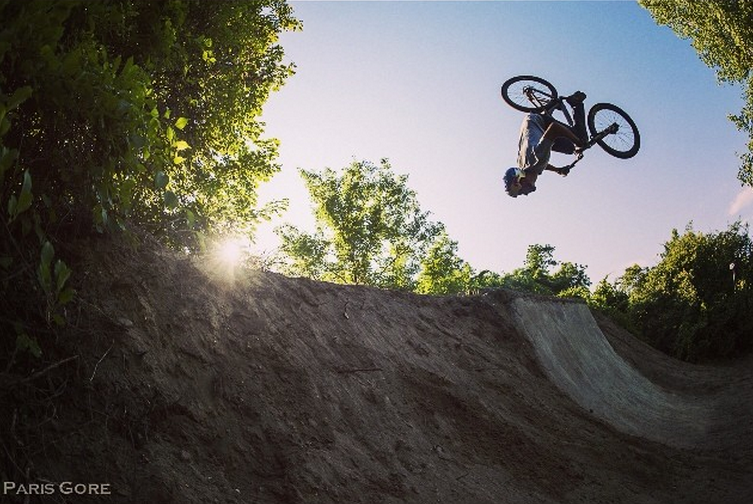
So where does he see the future of freeride mountain biking going next? “I think the whole exploration stuff is really cool, but the sport is going in so many different directions. Kids today have a lot more places to ride because the sport is way more established. There’s more jumps in small towns now than there’s ever been and more contests.”
“It’s about recognising what you’re good at and not following the path of what’s hot right now”
Is there anything he thinks would help push mountain biking out to the world? “There should be a pump track in every town”, he says with real enthusiasm “so little kids can ride like little dirt rollercoasters. They’re easy to build and don’t cost anything.”
After all, Chase himself started riding pretty much as soon as he could walk, pushing forward an entirely new discipline within mountain biking. With more people riding today than ever before, competition is becoming increasingly tough, but not impossible according to Chase.
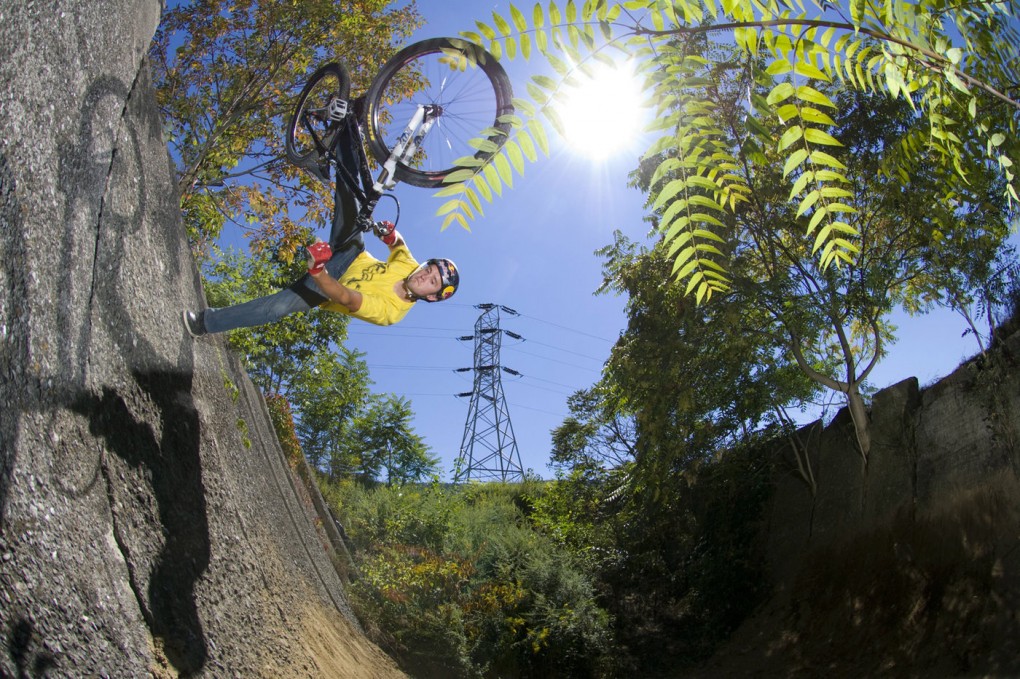
“If you’ve got raw talent – whether its filming or riding – then that’s the magic recipe to getting you in front of more eyes. Pushing it through your social media accounts on a daily basis is the best way to go.”
Was defining his niche ever a problem for Chase? “It took me a while to figure it out. It’s important to recognise what you’re best at. I was always best at being close to the ground and doing technical tricks that take ten tries just to get one shot.
“It was only when I started doing video that I realised this is what people wanted to see on film. It’s about recognising what you’re good at and not following the path of what’s hot right now.”
If kids today are anything like Chase, then the world’s got a lot to look forward to.